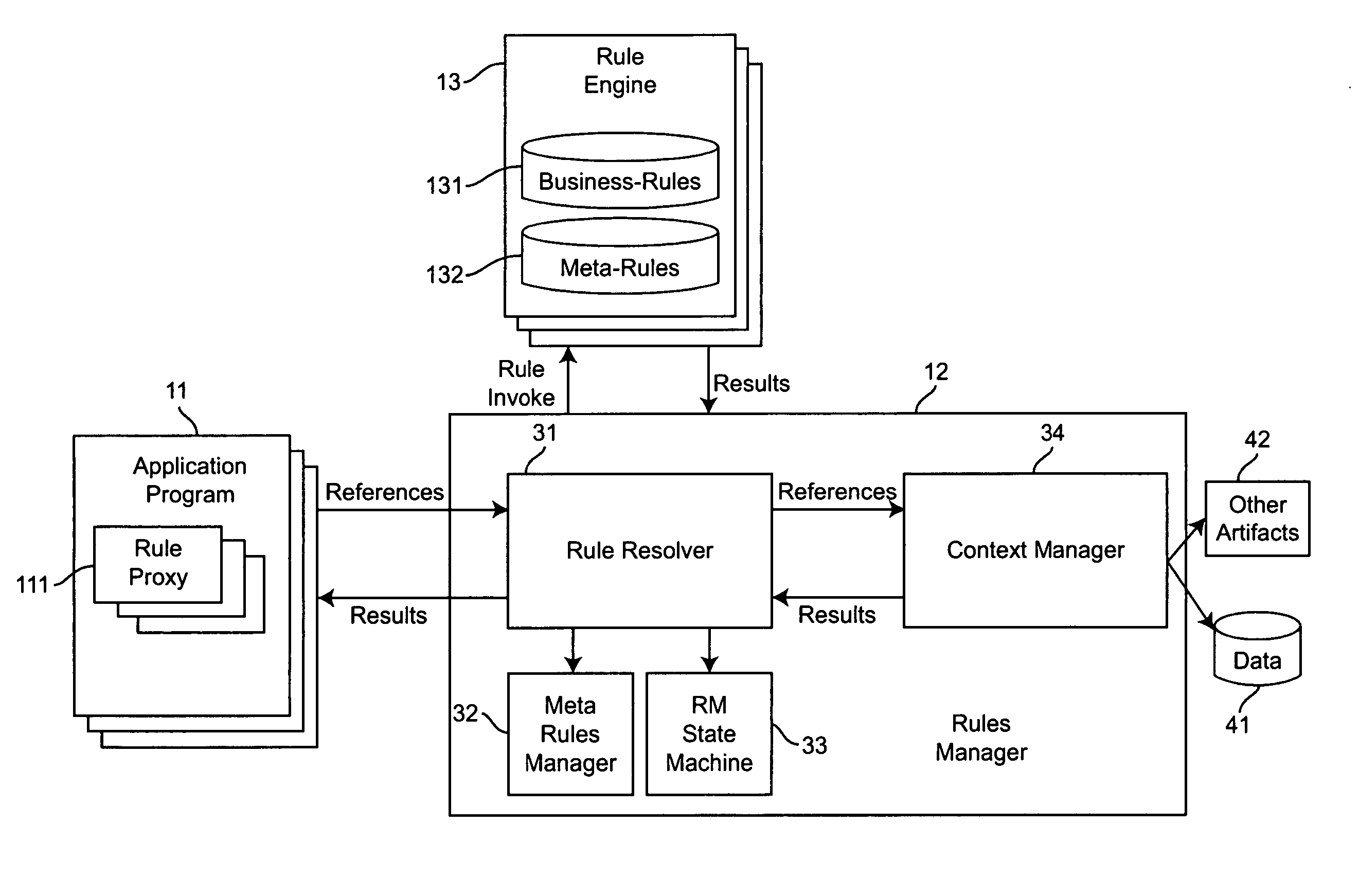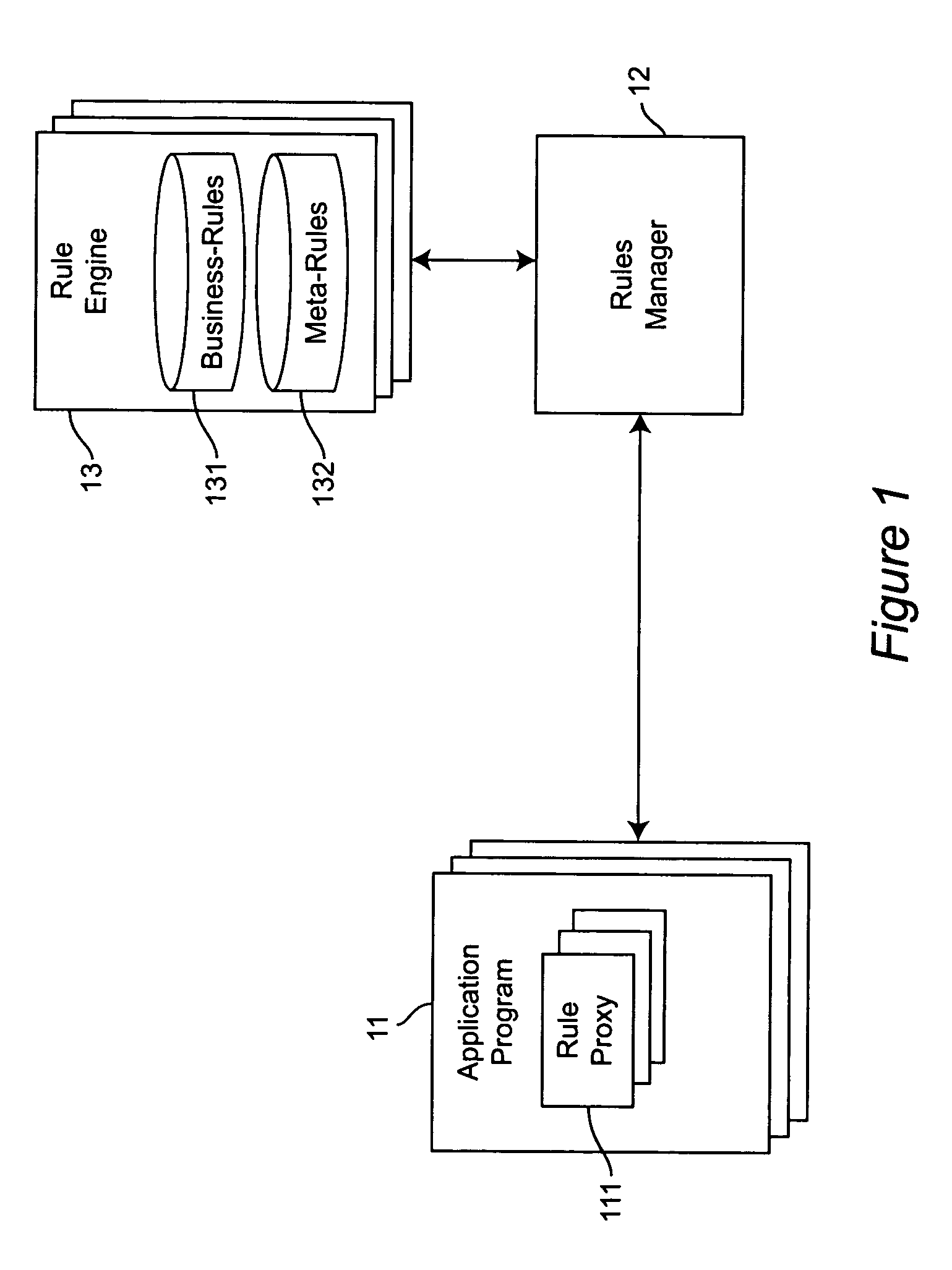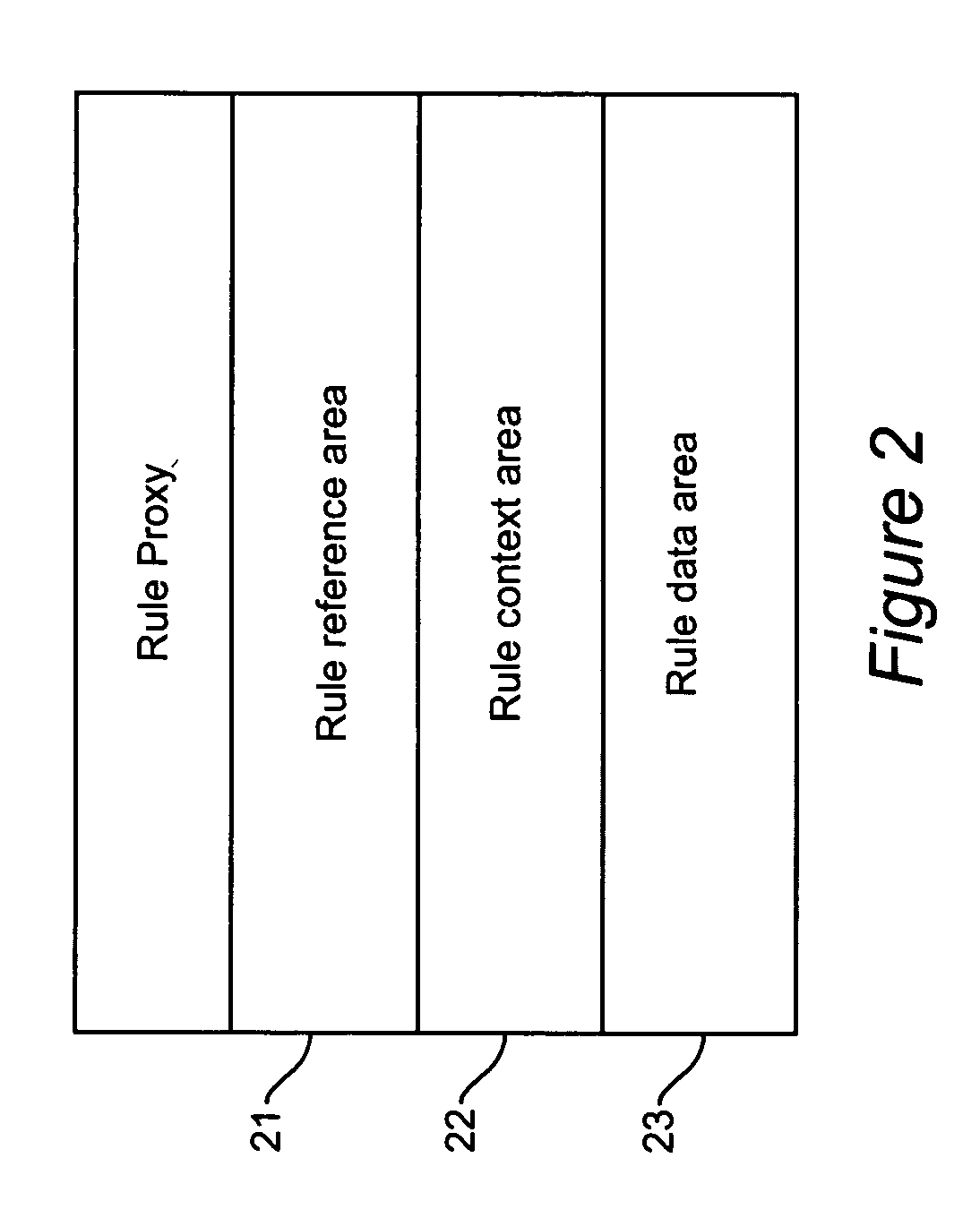Method and apparatus for using meta-rules to support dynamic rule-based business systems
a business system and meta-rule technology, applied in the field of business process management, can solve problems such as resistance to the adaptation to changing business practices, lack of system flexibility, and simple binding between rule references and rule instances that do not satisfy whole dynamism
- Summary
- Abstract
- Description
- Claims
- Application Information
AI Technical Summary
Benefits of technology
Problems solved by technology
Method used
Image
Examples
Embodiment Construction
[0064] The Meta-Rules System is a framework that supports the abstract invocation of business rules. The use of Meta-Rules evaluate and select the appropriate business rule and the invocation of the specific business rule. This system supports run-time services that, using Meta-Rules, perform dynamic selection and invocation of business rules. The basic framework of the Meta-Rules System is illustrated in FIG. 1 which presents its three key elements and their relations to one another.
[0065] Referring to FIG. 1, the three basic components of a Meta-Rules System are Application Programs 11, Rules Manager 12, and Business Rules Engine 13. Within an Application Program there may be one or more points where the programming logic needs to use a business rule to determine a data or control action. These points are represented by a Rule-Proxy 111, a structured IT artifact that contains information used by the Rules Manager 12 and Business Rules Engine 13 to perform the requested evaluation...
PUM
 Login to View More
Login to View More Abstract
Description
Claims
Application Information
 Login to View More
Login to View More - R&D
- Intellectual Property
- Life Sciences
- Materials
- Tech Scout
- Unparalleled Data Quality
- Higher Quality Content
- 60% Fewer Hallucinations
Browse by: Latest US Patents, China's latest patents, Technical Efficacy Thesaurus, Application Domain, Technology Topic, Popular Technical Reports.
© 2025 PatSnap. All rights reserved.Legal|Privacy policy|Modern Slavery Act Transparency Statement|Sitemap|About US| Contact US: help@patsnap.com



